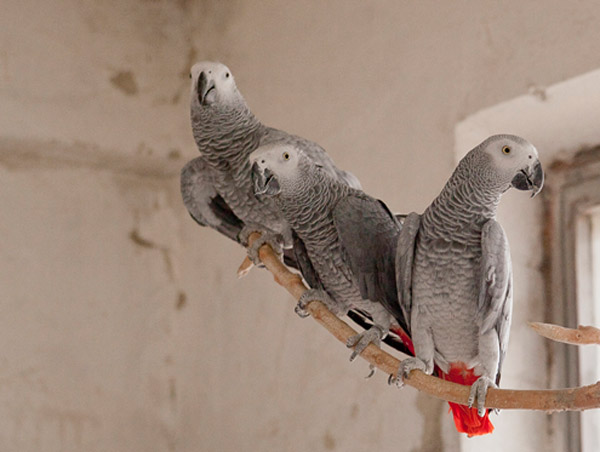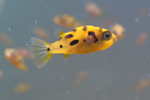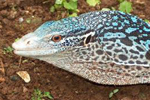In 2010, Bulgarian airport authorities confiscated 108 African grey parrots (Psittacus erithacus) from a smuggler. Last month, the 28 parrots who survived the stress of being stuffed into dog kennels, constantly handled by humans, and the absence of their native habitat, completed their three-year journey to freedom.
The journey began late one afternoon in 2010, Sophia Zoo employees were called to Sophia Airport, Bulgaria’s largest, to take the parrots back to the zoo’s animal rescue center.
“When we saw these birds stacked like sardines, we were so appalled,” said Irina Sahatchieva, Sophia Zoo’s international coordinator. She said the birds were packed into medium-sized dog kennels with a board dividing them horizontally in half, creating two shelves. There were 30 grey parrots on each shelf.
African grey parrots are particularly desired by illegal wildlife traders because they are highly intelligent—with the ability to mimic human voices and other sounds quickly—have longer-than-normal lifespans, and are easily tamed. The species is listed as Vulnerable by the IUCN Red List.
 After long journey, African grey parrots are free again. Photo by: © Charles Bergman. |
These parrots had been wild-caught from somewhere in Africa and transported via Lebanon to Bulgaria, without legal documentation. While Sophia Zoo quarantined them, assessing the disease risk of letting the parrots live near other animals in the zoo, more than half died from the stress of constant handling.
Sahatchieva said though the zoo wanted to return the wild-caught birds back to their home, they did not know how it would happen until an international non-profit organization, the World Parrot Trust, became involved. The World Parrot Trust spent the time and resources the zoo could not, organizing a journey for the birds from Sophia Zoo to a Ugandan wildlife sanctuary in the native habitat zone for African grey parrots.
At a release ceremony on July 10, renowned conservationist Jane Goodall pulled the string to release the grey parrots strong enough to fly into Ngamba Island Chimpanzee Sanctuary—17 of the 108 confiscated three years prior. The sanctuary continues to rehabilitate eleven other parrots that made the trip to from Bulgaria to Uganda, hoping that one day they will also be strong enough to fly off to the trees.
Panta Kasoma, executive director of Jane Goodall Institute Uganda, said illegal trade wildlife increases pressure on species that are already feeling the stress of decreased habitat.
“We are losing forest, savannah habitat, for many of these wildlife species,” Kasoma said. “If on top of the loss of habitat we then engage in trade, we are putting these species at great risk.”
The grey parrots who made the 3,000 mile journey are doing well in their new Ugandan home according to Joshua Rukundo, a veterinarian at Ngamba Island sanctuary. Sanctuary staff monitor the parrots at feeding stations around the island, where they provide sugar cane, grains, and berries, foods to which parrots are especially partial. The grey parrots arrive to the feeding stations with the island’s wild population of parrots.
The wild parrots are helping the greys re-learn wild ways, Rukundo said. The parrots live well with one another and interact often. The wild parrots responded to the grey parrot calls while the greys underwent a quarantine process to make sure the birds were not bringing disease to the island.
“Wild parrots came every morning to the aviary,” Rukundo said.
The grey parrots will be monitored in order to assess the success of their re-introduction to wild habitat. Rukundo said there are thousands of confiscated parrots worldwide, essentially in limbo while authorities find suitable homes for birds exiting the black market.

Jane Goodall, joined by WPT Biologist Dr. Rowan Martin and representatives from the Uganda Wildlife Education Center, the Uganda Wildlife Authority, and the Ngamba Chimpanzee Sanctuary, setting free the first group of Grey Parrots. Photo by: © Sherry McKelvie.

Three of the confiscated Grey Parrots at the Sofia Zoo, Bulgaria before their departure. Photo by: © Stefan Avramov.
Related articles
How YouTube has put the world’s only poisonous primates at risk

(07/25/2013) It all started with a video: in 2009 a Russian man uploaded a video of himself tickling his exotic pet (a pygmy slow loris) from Vietnam onto the hugely popular site YouTube. Since then the video has been viewed over half a million times. But a new study in the open source journal in PLoS ONE, finds that such YouTube videos have helped fuel a cruel, illegal trade that is putting some of the world’s least-known primates at risk of extinction. Lorises are small, shy, and nocturnal primates that inhabit the forests of tropical Asia, but the existence of all eight species is currently imperiled by a booming illegal pet trade that has been aided by videos of lorises being tickled, holding tiny umbrellas, or doing other seemingly cute (but wholly unnatural) things.
Rare and threatened freshwater fish plundered for aquarium trade in India

(07/25/2013) Thirty percent of the fish exported from India in the past seven years were from dozens of threatened species including the endangered red-lined torpedo barb (Puntius denisonii) and the miss kerala look alike (Puntius chalakkudiensis) amongst others, according to a recently published paper in Biological Conservation. By documenting the extent and impact of the trade in rare and threatened freshwater fish species in India, scientists have uncovered the local scale of the aquarium pet trade.
Zoos call on governments to take urgent action against illegal wildlife trade (photos)

(07/24/2013) In a single night in March, a band of heavily-armed, horse-riding poachers slaughtered 89 elephants in southern Chad, thirty of which were pregnant females. The carnage was the worst poaching incident of the year, but even this slaughter paled in comparison to the 300 elephants killed in a Cameroon park in 2012. Elephant poaching is hitting new records as experts say some 30,000 elephants are being killed every year for their ivory tusks. But the illegal wildlife trade—estimated at $19 billion—is not just decimating elephants, but also rhinos, big cats, great apes, and thousands of lesser-known species like pangolins and slow lorises. This growing carnage recently led to representatives of over 40 zoos and dozens of wildlife programs to call on governments around the world to take immediate action on long-neglected wildlife crime.
Featured video: saving animals from the illegal pet trade in Guatemala
(07/22/2013) Found in Central America’s largest forest, the Maya Biosphere Reserve, the Guatemalan organization Arcas has rescued and rehabilitated thousands of animals since its inception in 1989. Unlike many wildlife rescue centers worldwide, Arcas focuses on rehabilitating every animal for eventually release back into the wild. This means intensive training for each species, including food gathering and predator avoidance. A new short video by Arcas highlights the group’s decades-long work.
Illegal wildlife trade flourishes in Sumatra

(06/10/2013) In a chilly rain on Sunday, in a town just a few kilometers beyond the edge of a protected Sumatran rainforest, a young orangutan sat perched on a piece of plywood and grabbed the metal wires of his tiny cage.
He has sat in that cage for six months and, like dozens of other species on display in this ‘zoo’ in the town of Kadang in Aceh, he has a price tag. This packed assembly is an acknowledged front for illegal trafficking in wildlife.
Loris champion: conserving the world’s most surprising primate family

(06/04/2013) Before Anna Nekaris began championing the cause of the world’s lorises, little was known about this cryptic family of large-eyed, nocturnal, insect-eating, venomous primates. Nekaris, with Oxford Brookes University and founder of the Little Fireface project, has been instrumental in documenting rarely-seen loris behavior, establishing conservation programs, and identifying new species of these hugely-imperiled Asian primates.
Monitor lizards vanishing to international trade in pets and skins

(06/04/2013) The world’s monitor lizards remind us that the world was once ruled by reptiles: this genus (Varanus) includes the world’s biggest lizards, such as the stunning Komodo dragon and many other island kings. A large number beautifully-colored and patterned, these lizards are known for their intelligence and their apex role in many island food chains. However, a new study finds that the world’s monitors, especially those in Southeast Asia, are vanishing due to the international pet trade and for their skins, which are turned into handbags and straps for watches. Meanwhile the rapid destruction of their rainforest homes is exacerbating the situation.